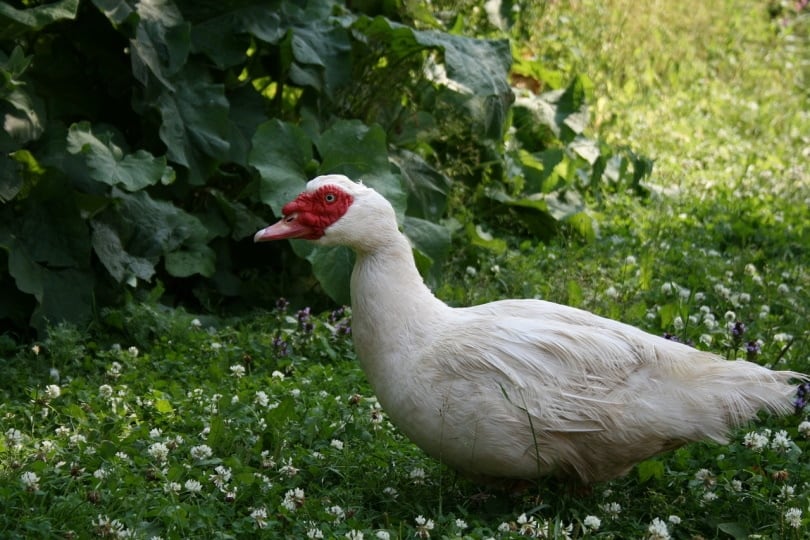If you’ve never owned ducks before, you might not realize just how rewarding the experience can be. Not only do ducks lay large, nutritious eggs, but they also have several other benefits. Ducks are easy to keep, both cold-hardy and heat tolerant, and take care of insect pests on your lawn.
There are tons of excellent duck breed options. But if you’re looking for a solid white flock to waddle around the yard, we rounded up nine snow-white birds to choose from. Let’s get to know each one a little better.

The 9 White Duck Breeds
1. Crested Duck

The Crested might be one of the most interesting-looking white ducks you can find. They have a tuft on their head—or ‘crest’—that looks like a funky hairdo. They definitely stand out with their elegant grace among the other pond ducks.
Purpose
These ducks sure are versatile. You can have them for basically any reason you can think up. They are excellent dual-purpose ducks—making acceptable candidates for meat and egg production. Many people keep them simply because they’re lovely, looking like a million bucks swimming on the pond.
Temperament
Crested ducks make great pets because they are pleasant and sweet. They might not like being handled a lot, but they are usually friendly—not skittish or fearful of people.
Environment
The crested duck is originally from South America in warm climates. Even though these are tropical birds, they are still quite a cold hardy breed—withstanding temperatures as low as 20 degrees. They work well both free-ranging or in an enclosure as long as they have full access to water.
2. Grimaud Hybrid Duck
The neat Grimaud Hybrid is a combination of two strains of Pekin duck. French breeder Grimaud Freres created this duck to be fast-growing and plump—making a fabulous addition to almost any flock.
Purpose
Because of their ability to grow quickly, these ducks make excellent meat birds. They mature at 41 days, topping out around 7 pounds. They’re also excellent layers, so they efficiently serve as a dual-purpose duck.
Temperament
This hybrid is usually tolerant and calm around people. They prefer no direct contact, but they don’t act too put-off if you’re around them. They generally get along well with other flock mates.
Environment
Originating in France, these ducks are cold hardy, and tolerate heat well, too. They work in most climates, as long as they have access to fresh water at all times.
3. Cherry Valley Duck
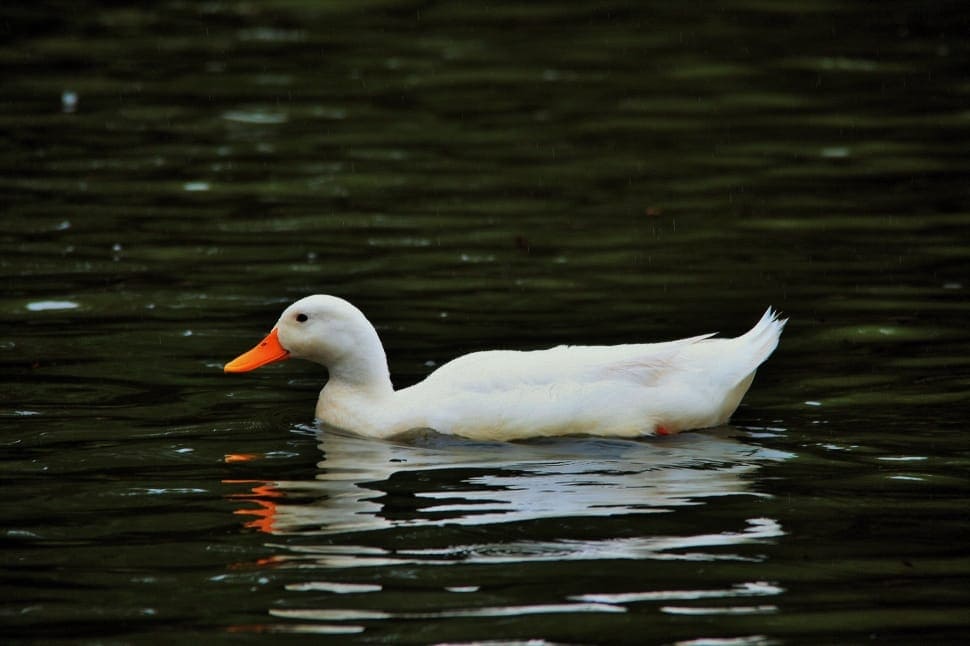
The Cherry Valley duck is another Pekin cross-bred for its fast growth and productivity. These ducks are in high demand and often are picks for breeding programs. They reproduce with ease, hatching a high number of ducklings.
Purpose
These ducks are primarily for breeding, meat, and eggs—making them incredibly useful and versatile. These ducks are beginner-friendly and high-yielding.
Temperament
Cherry Valley ducks are relatively low-maintenance and unpretentious. They are agreeable and even-tempered, making them low maintenance options for owners.
Environment
As long as you have a water source and food supply for the Cherry Valley duck, they work well in both free-ranging and caged atmospheres.
4. Canard de Bourbourg Duck
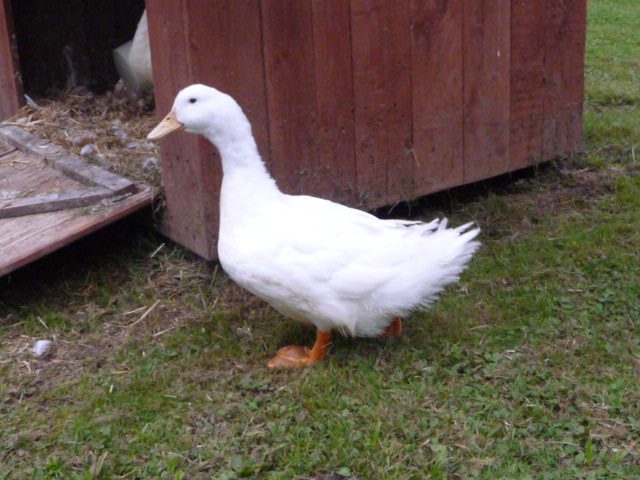
This duck was developed around the Belgian border in the 19th century. By the time the 20th century rolled around, they were almost extinct. However, in 1824 the breed was replenished, but they are considered a rare breed today.
Purpose
Even though this duck produces eggs, it’s always been used as a meat duck. Many love these table birds because of their delicious taste.
Temperament
This breed tends to stay to themselves but they are not aggressive when approached.
Environment
They are cold hardy and adapt decently well to heat, but they are not widespread outside of France.
5. American Pekin Duck

The American Pekin has grown in popularity tremendously since its modest beginning. Several different areas used American Pekins in breeding development since they are resilient, hard-wearing, and personable.
Purpose
This breed is primarily used for meat purposes because it is robust and large. However, they tend to be excellent layers, so you could definitely use them for a multipurpose duck.
Temperament
Pekins tend to be calm and amiable, so they work well in many barnyard situations.
Environment
These ducks are extremely cold hardy, making them compatible for very low and moderately high temperatures.
6. German Pekin Duck
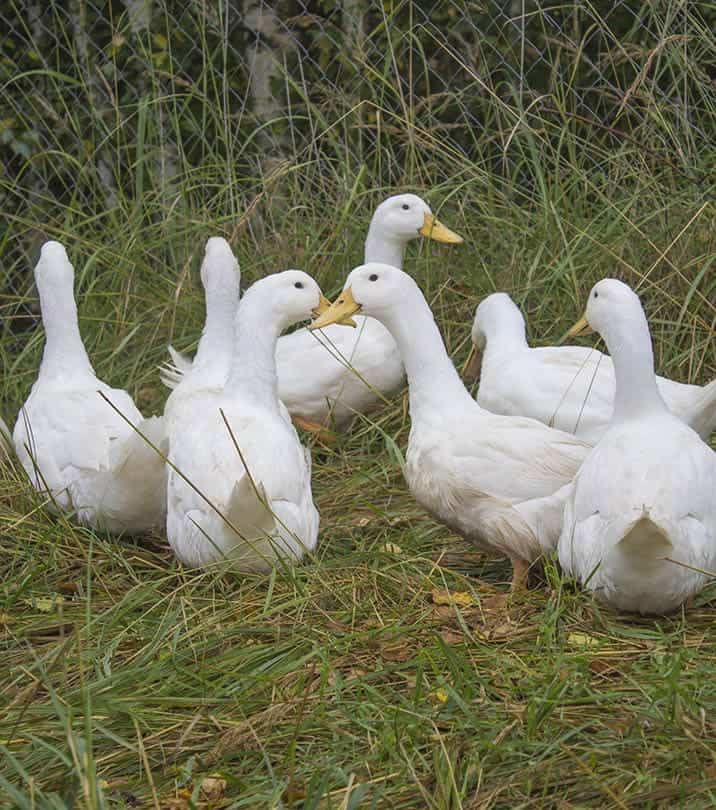
German Pekins are European ducks that differ from the American Pekin, but they are related. This breed originated in China and Japan, even though it is named after Germany. These ducks are all white with a slightly yellow tint.
Purpose
German Pekins are generally used for meat birds. However, they do have a high yield of eggs, so they make terrific dual-purpose ducks.
Temperament
German Pekins are relaxed and easy-going. They tend to be social and agreeable with people and flock mates.
Environment
These ducks are highly adaptable, working well in almost any environment. You can let them free range or you can cage them. As long as they have an open water source, they’re happy little swimmers.
7. Aylesbury Duck
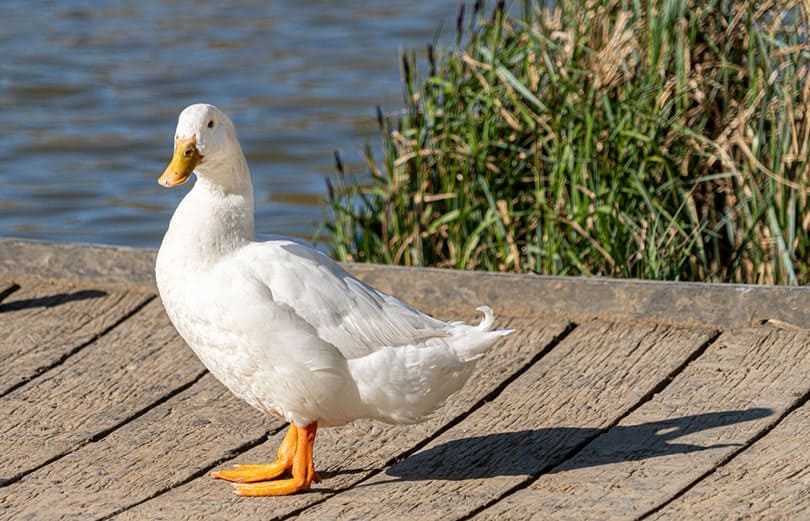
The Aylesbury duck has an unclear origin. However, we do know that they were prized possessions among breeders. Originally this duck came in a couple of different colors—but the white ducks were most popular. From selective breeding, all purebred Aylesbury ducks are white today.
This breed is critically endangered, meaning there aren’t many of these beauties left.
Purpose
Aylesbury ducks are most commonly bred as meat birds. They tend to grow very quickly, serving as very high-quality meat. However, they are also bread for appearance purposes. These snow whites look fantastic in any pond.
Temperament
This breed is said to be very friendly and curious. They’re quite talkative as well, so if you don’t enjoy lots of quacks, this might not be the duck for you.
Environment
These ducks thrive in many environments, making them great picks for several climates. They need a fresh water source at all times.
8. Mulard Duck

The interesting Mulard duck is a hybrid mix between a domesticated duck and a Muscovy duck. Interestingly this breed is all sterile, so they are not able to reproduce on their own.
Purpose
Mulards are specifically bread due to their high meat production. They develop very quickly, producing high-quality meat that is delicious at any table.
Temperament
This duck can exhibit traits from both parents. Combined, they make a calmer, even-keeled bird that is easy to keep.
Environment
Even though this breed has a Muscovy parent, they take after the Pekin—wanting to stay close by water.
9. Bali Duck

Arguably the most exciting breed on the list is the Bali duck. Combined with an Indian runner, they are thin with a tuft of hair as their crest. The Bali can be a few colors—but you mostly find all white.
Purpose
Bali ducks are tall and thin, making them great for ornamental birds or egg layers. Since they are so slender, they don’t do well in meat production.
Temperament
Many people also keep the Bali duck because of their award-winning friendly personalities. They are pets by nature, making them excellent candidates if you would like to have a duck for a companion.
Environment
The Bali duck can thrive in almost any climate. They have incredible tolerance to both high and low temperatures.

Final Thoughts
All white ducks are beautiful in any setting. They look gorgeous gliding across the pond, creating a charming contrast against the natural elements. All of these ducks agreeable—and most are dual-purpose—so if you were looking for a friendly choice, you could choose any one of these for your flock.
Featured Image Credit: emminum, Pixabay
